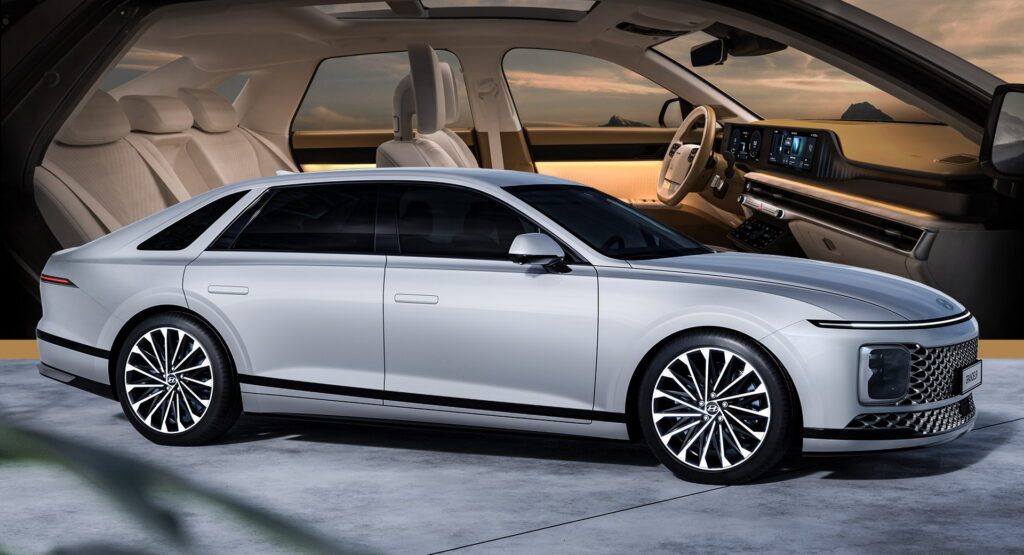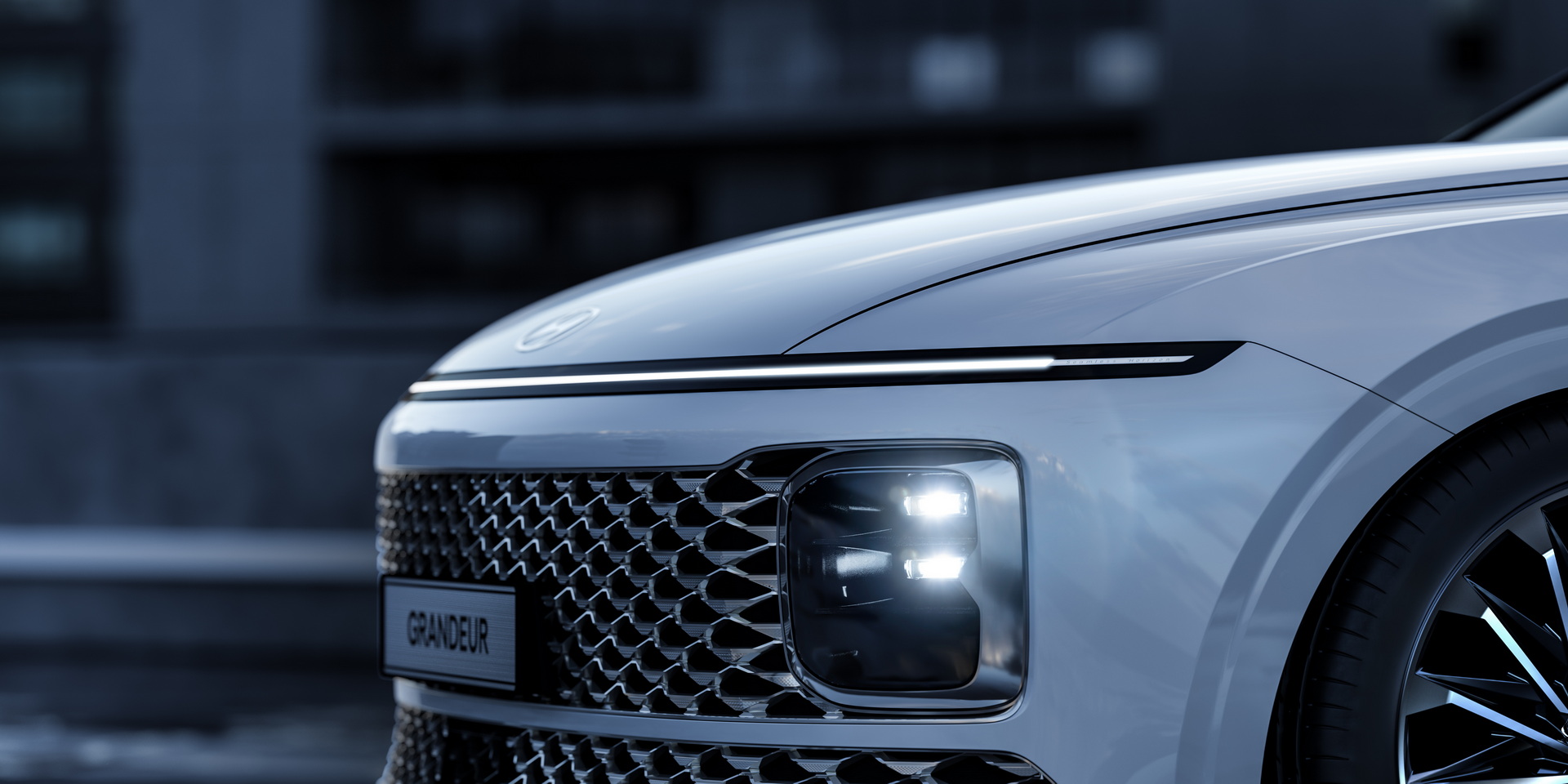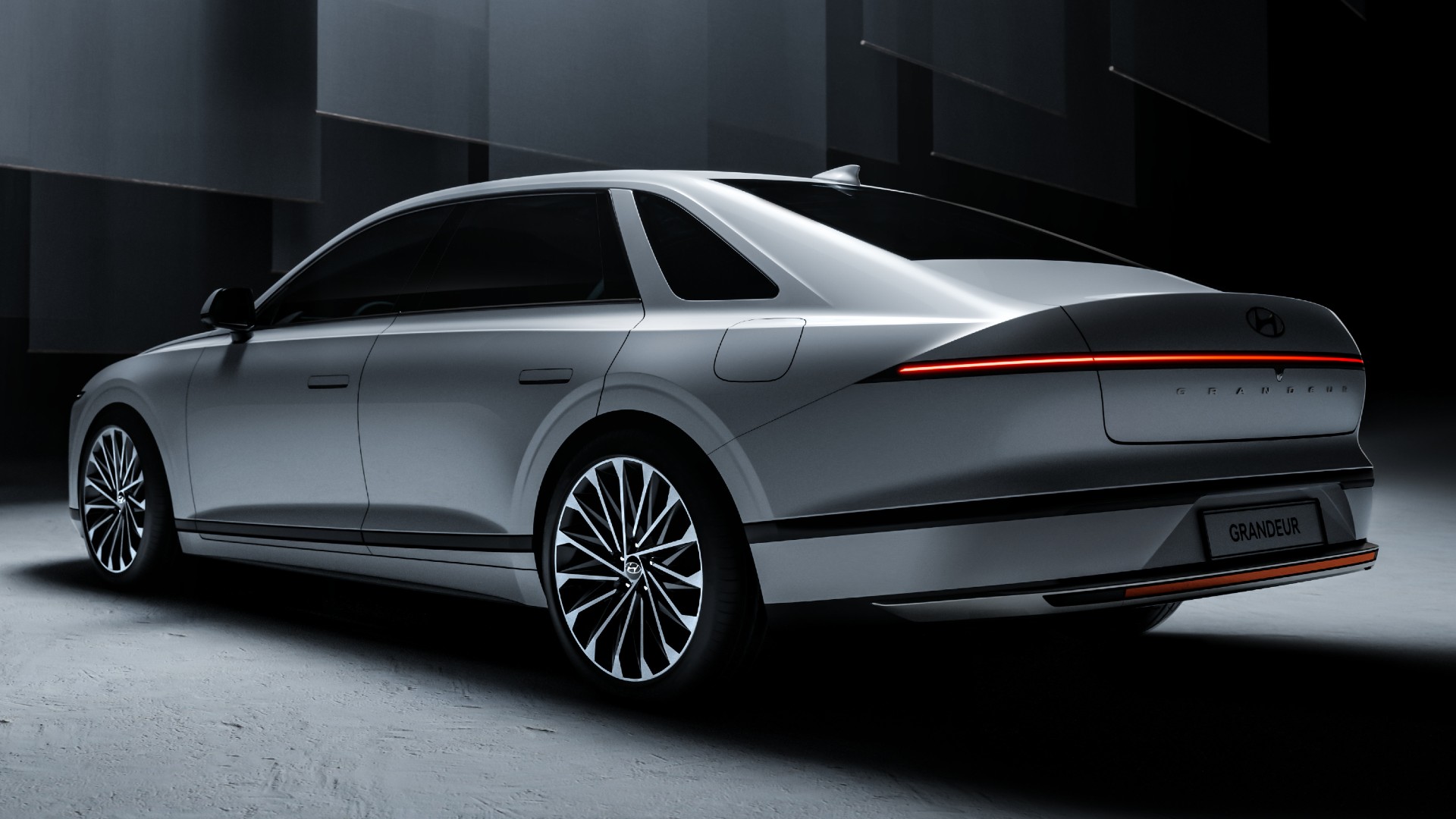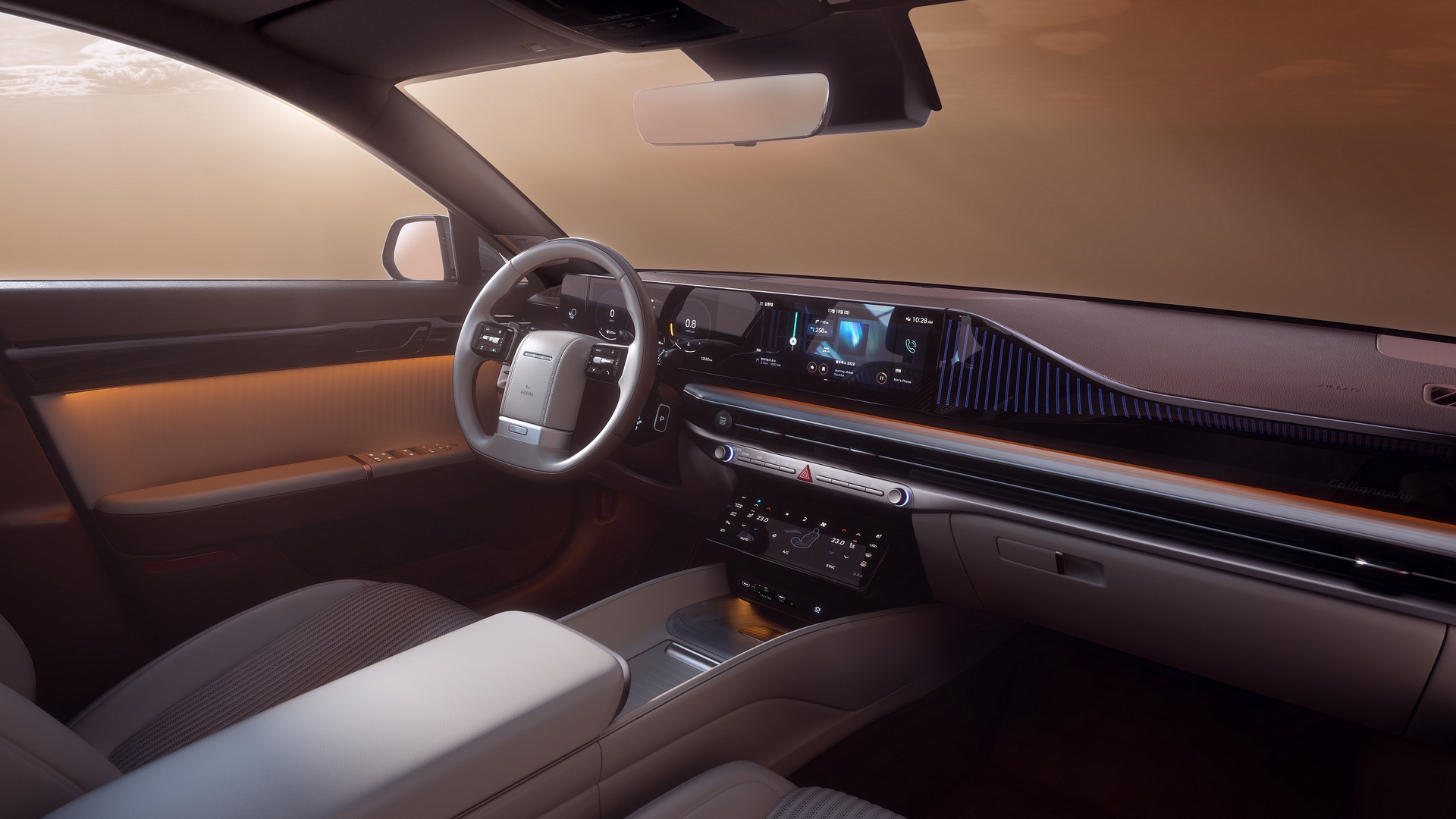Hyundai has taken the wraps off the all-new seventh generation of the Grandeur in Korea, a large sedan that is sold under the Azera nameplate in export markets. The new model adopts futuristic styling cues with more luxury and tech features inside the cabin, blurring the lines between Hyundai and Genesis when it comes to premium sedans.
Visually, the new Grandeur looks significantly more modern and streamlined compared to its predecessor which was introduced in 2016 and got facelifted in 2020. At the front, it adopts a Staria-like full LED bar that is called “Seamless Horizon Lamp”. The actual headlights are positioned underneath, next to the massive “parametric jewel” grille that is covering most of the bumper.
Also Read: Genesis To Launch “One Of One” Division For Bespoke Builds
The profile features a single character line running from the front all the way to the rear. The proportions are enhanced thanks to the stretched wheelbase although the FWD nature of the Grandeur’s architecture is still evident from the longer-than-usual front overhang. Speaking of which, Hyundai didn’t go into details but the model is expected to share its underpinnings with the Kia K8/Cadenza.
Overall, Hyundai designers did a great job in creating a clean side view, with flush door handles, 20-inch alloy wheels, and a clever reference to the past. We are talking about the body-colored C-pillars and the triangular rear side window which is similar to the first-gen Grandeur from the ’80s. While Hyundai is proud of the sedan’s heritage, we must note that the original Grandeur was a rebadged second-gen Mitsubishi Debonair (1986-1992).
At the back, the full-width LED bar for the taillights is quite thin, positioned below a duck-tail-style design for the tailgate, similar to the Hyundai Ioniq 6 but with a much more assertive and minimalist approach. The black horizontal element on the bumper that serves as a continuation of the line above the side sills emphasizes the sedan’s width, together with the horizontal reflector.
The cabin is as luxurious and tech-focused as you would expect from a premium sedan offering, with high-quality sustainably-sourced materials and ambient lighting setting the stage. We must admit though that it doesn’t look as expensive as the interior of a Genesis G90, allowing enough breathing room between itself and the high-end Korean brand.
The layout of the dashboard is similar to the previous generation Grandeur, which kind of confirms we are talking about a significantly updated model and not a clean-sheet design. Still, there is a new digital cockpit with large-diameter screens, a third touchscreen housing the climate controls, and a new steering wheel integrating buttons and the gear selector. Wood and aluminum accents are combined with eco-process Napa leather and anti-bacterial leather upholstery.
The design reveal of the Hyundai Grandeur didn’t include specs. As reported by the Korean Car Blog, the model will likely offer the same options as the Kia K8 sibling. This means it will be available with a hybrid turbocharged 1.6-liter four-cylinder, a naturally-aspirated 2.5-liter four-cylinder, and a 3.5-liter V6 in petrol and LPG flavors. The flagship V6 trim will produce as much as 295 hp (221 kW / 300 PS) and feature AWD.
We will learn more about Hyundai’s latest sedan when it finally launches in its home market in Korea. The first deliveries are expected to commence in the third quarter of 2023.


















